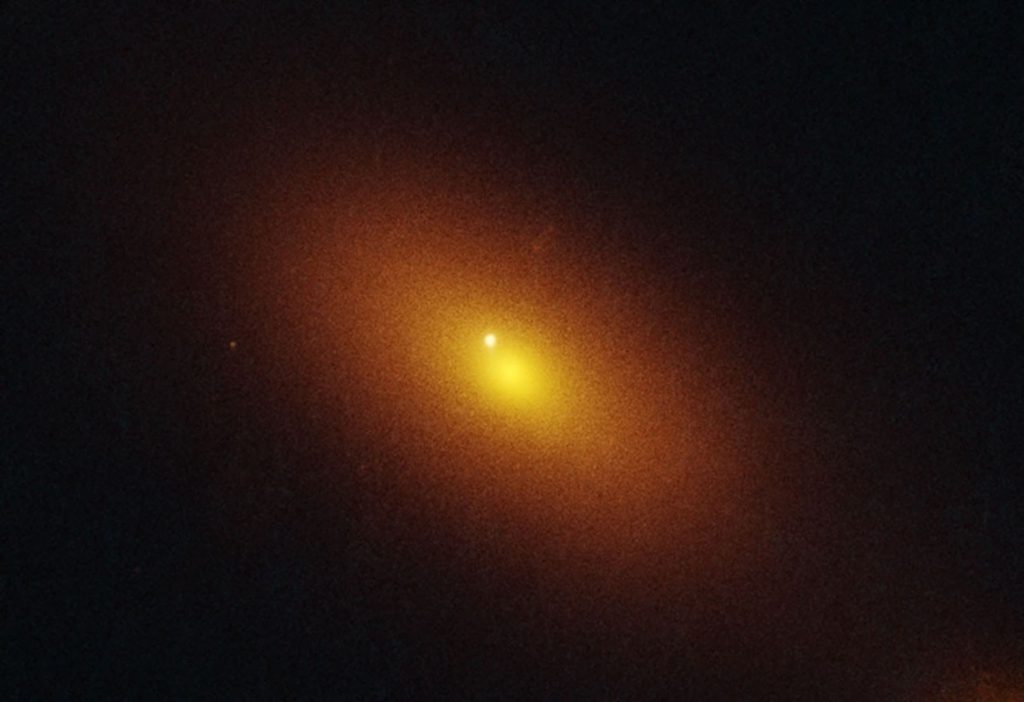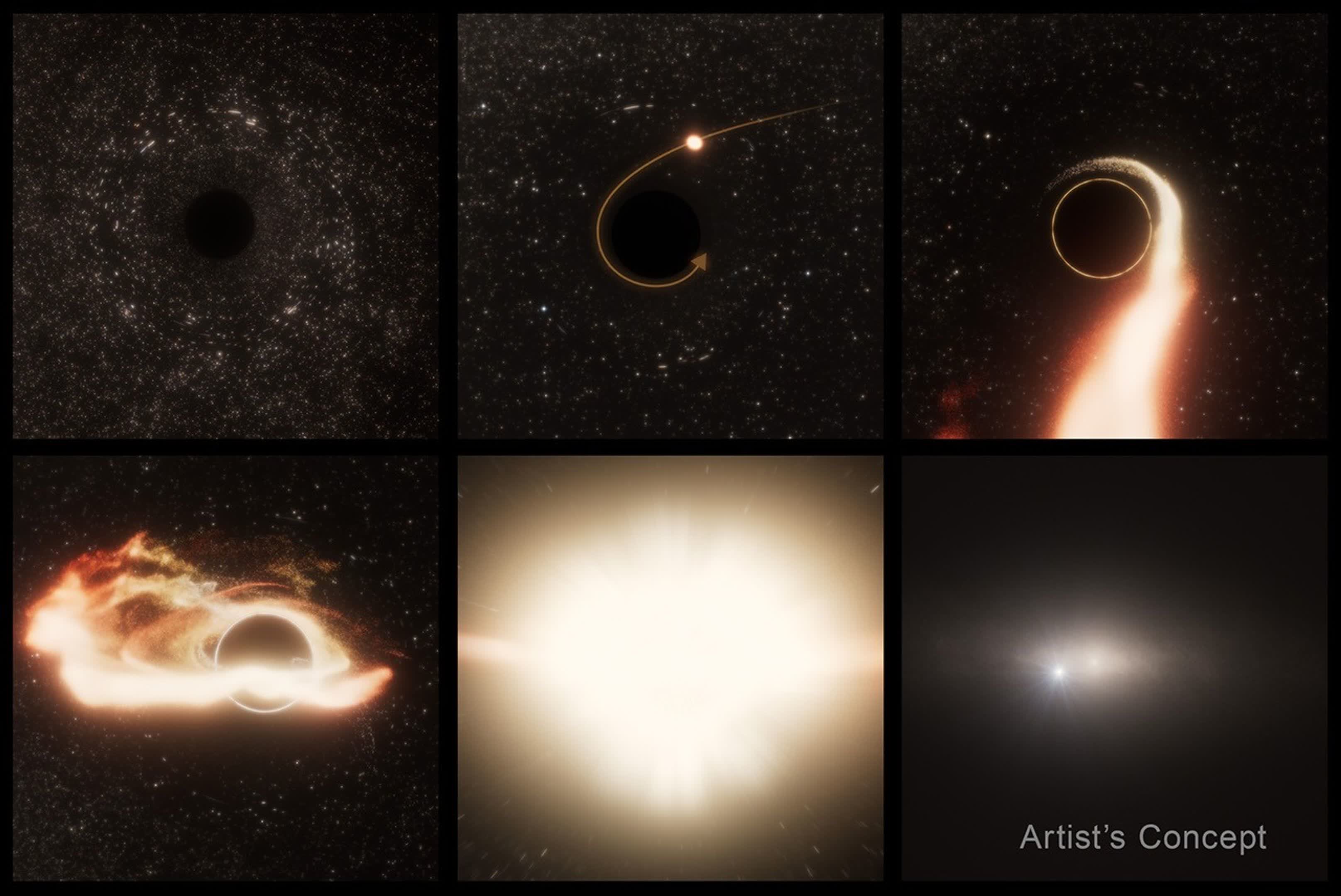
Via the trying glass: The invention of a supermassive black gap not solely challenges assumptions about the place these galactic giants reside but in addition demonstrates the ability of mixing observations throughout the electromagnetic spectrum. As new telescopes such because the Vera C. Rubin Observatory and NASA’s Nancy Grace Roman House Telescope come on-line, astronomers count on to uncover extra of those elusive wanderers.
Astronomers have recognized a supermassive black gap situated on the outskirts of a galaxy 600 million light-years from Earth, the place it was noticed consuming a close-by star.
This extraordinary discover, marked by a superb cosmic flare, has given scientists their first direct glimpse of a “wandering” black gap consuming a star outdoors a galactic heart – a phenomenon by no means earlier than noticed.
The occasion, labeled AT2024tvd, was first seen by the Zwicky Transient Facility at Caltech’s Palomar Observatory, which surveys the northern sky each two days. The flare was as shiny as a supernova, however its distinctive spectral signature: broad emission traces of hydrogen, helium, carbon, nitrogen, and silicon, revealing its true origin: a star being torn aside and devoured by a black gap.
This course of, referred to as a tidal disruption occasion (TDE), happens when a star ventures too near a black gap and is stretched into skinny streams by its immense gravity, a course of scientists consult with as “spaghettification.” The ensuing particles heats up and glows in ultraviolet and visual gentle, making a spectacular burst of radiation.
What units AT2024tvd aside from almost 100 different TDEs recorded by optical sky surveys is its location. Not like earlier occasions, which all originated from the facilities of galaxies, this TDE was discovered 2,600 light-years from the galactic core. There, a a lot bigger black gap – 100 million instances the mass of the Solar – sits on the galaxy’s heart, actively consuming fuel and shining as an lively galactic nucleus.
By comparability, the newly found black gap is about a million instances the mass of the Solar and isn’t gravitationally sure to its bigger neighbor regardless of their proximity. This separation is just a tenth of the gap between our Solar and the Milky Manner’s central black gap, making the association significantly uncommon.
The detection of AT2024tvd was a collaborative effort involving a number of observatories. After the preliminary flare was noticed, astronomers used information from Pan-STARRS, the Sloan Digital Sky Survey, and the DESI Legacy Imaging Survey to catalog the host galaxy.
NASA’s Chandra X-ray Observatory confirmed that the X-ray emissions had been offset from the galactic heart, and the Very Massive Array radio telescope supplied extra proof. Finally, it was the Hubble House Telescope’s optical and ultraviolet precision that pinpointed the occasion’s actual location and revealed its distinctively blue hue in comparison with the remainder of the galaxy.
The presence of two supermassive black holes in a single galaxy raises intriguing questions on their origins. One principle means that the wandering black gap was ejected from the galactic heart by way of a gravitational interplay involving three black holes, with the lightest being flung outward.
One other risk is that it’s the remnant of a smaller galaxy that merged with the host galaxy greater than a billion years in the past. Though Hubble photographs present no direct proof of a latest merger, the existence of a second supermassive black gap strongly hints that such an occasion occurred within the galaxy’s previous.
“There may be already good proof that galaxy mergers improve TDE charges, however the presence of a second black gap in AT2024tvd’s host galaxy signifies that in some unspecified time in the future on this galaxy’s previous, a merger will need to have occurred,” defined Erica Hammerstein, a postdoctoral researcher at UC Berkeley who examined the Hubble information.
The black gap answerable for the TDE is often invisible, solely revealing itself each tens of hundreds of years when it disrupts and consumes a star. After such an outburst, it returns to dormancy, ready for its subsequent cosmic meal.
Theorists have lengthy predicted the existence of large black holes away from galactic facilities, however till now, none had been immediately noticed within the act of feeding. “AT2024tvd is the primary offset TDE captured by optical sky surveys, and it opens up the whole risk of uncovering this elusive inhabitants of wandering black holes with future sky surveys,” stated Yuhan Yao, the research’s lead writer.






